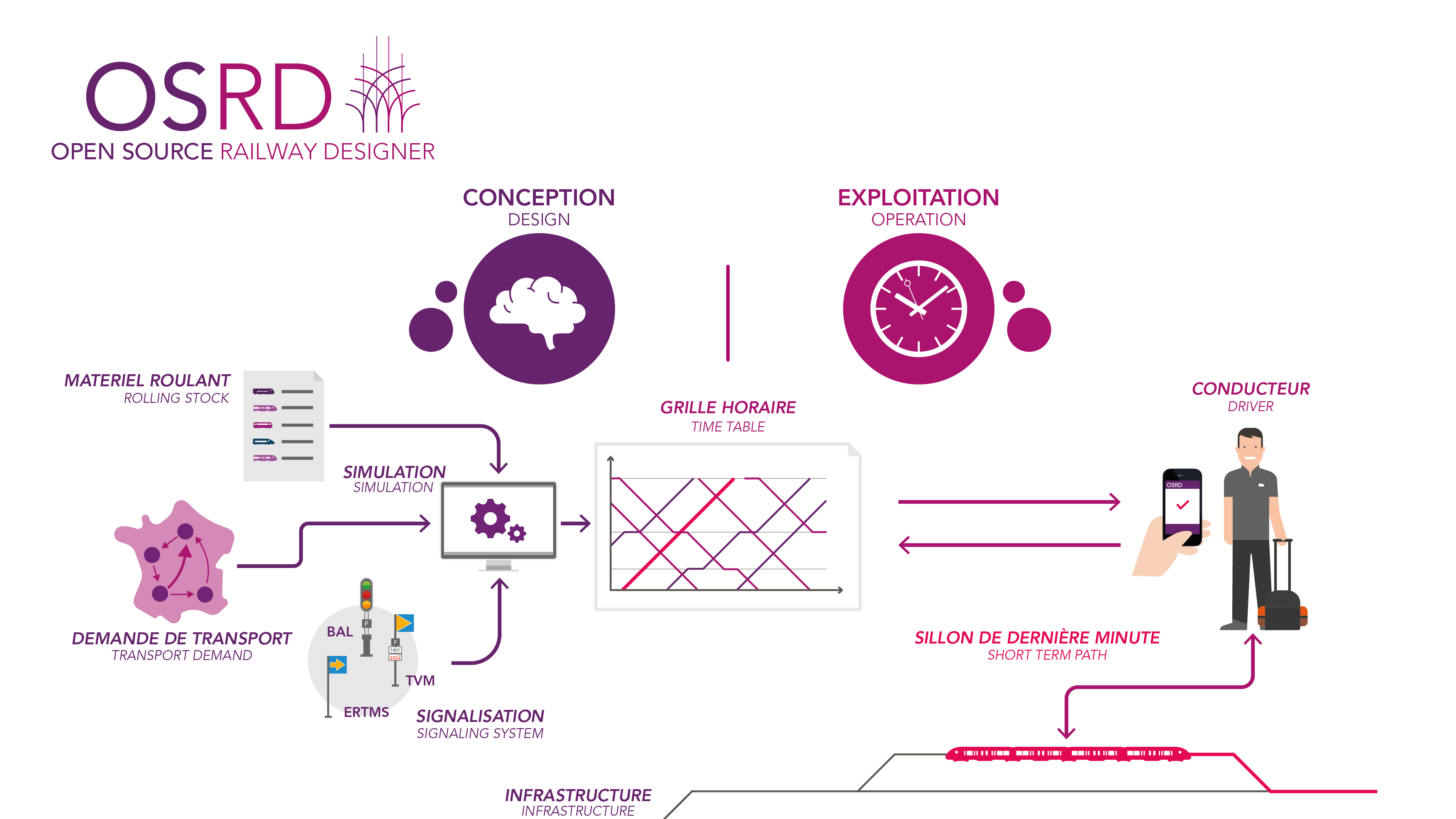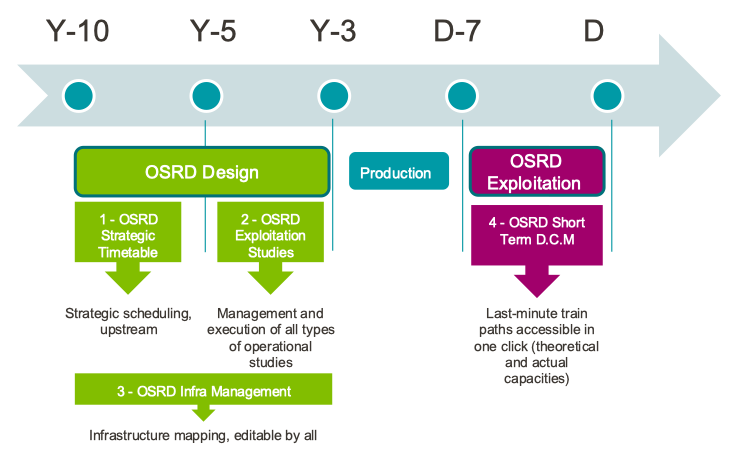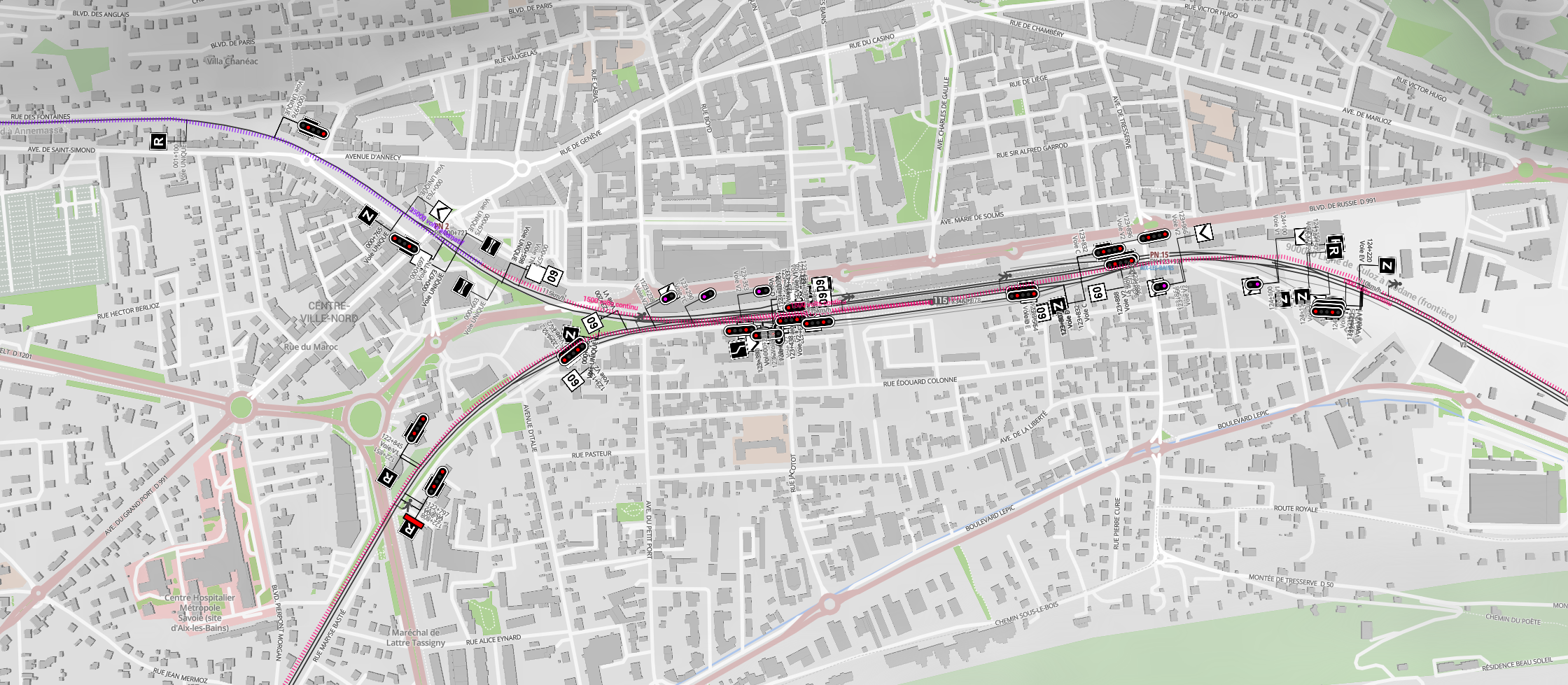
OSRD is meant to fulfill a range of use-cases related to railway planning:

Timetabling
Timetabling is about designing a transport service in order to meet the transit needs.
OSRD addresses this by providing:
- a track level railway infrastructure database
- a rolling stock database
- an infrastructure edition tool
- a timetabling tool
- train path allowances, including an allowance distribution which minimizes energy use
Planned features include:
- automated conflict detection1
- line level infrastructure synthesis from track level infrastructure
- interactive timetable diagrams
- a throughput and rolling stock turnover optimizer
Operation studies
Operation studies assess the ability of infrastructures to meet demand, and balance infrastructure capacity with transportation needs. They enable informed public infrastructure investment decisions.
OSRD addresses this need by providing:
- a track level railway infrastructure database
- a rolling stock database
- an infrastructure edition tool
- a timetabling tool
- train path allowances, including an allowance distribution which minimizes energy use
- a signaling simulator
Planned features include:
- automated conflict detection1
- automated timetable robustness assessment using stochastic simulation
- automated throughput analyzer
Infrastructure management
Processing railway infrastructure data is a requirement shared by all of OSRD’s features. Therefore, a dedicated module provides:
- a customizable infrastructure map
- an infrastructure editor
- a search feature
- an import tool2

Short term capacity management
Even though most train paths3 are allocated years before operations, a growing part is allocated shortly before the planned departure time. This change is largely due to growing demand for rail freight.
There is therefore a need for timely (less than 3 minutes) and correct answers, which cannot be achieved without automation.
A correct train path must, among other things:
- take planned infrastructure work into account
- avoid generating conflicts1 with planned trains, including inside stations
- realistically estimate train behavior, and thus when the train reaches or leaves critical locations
Even though some tools can currently provide answers, none currently takes all of the above into account, especially station conflicts.
This tool is undergoing active development, and should be available within the coming years.
A conflicts occurs when the movement of a train interferes with another ↩︎ ↩︎ ↩︎
OSRD uses the RailJSON rail infrastructure file format. It is a free and documented format, designed to be infrastructure manager-agnostic, easy to generate and use. ↩︎
A train paths is a right of way on the rail network, bounded in time and space. Train paths are sold by infrastructure managers to railway companies. ↩︎